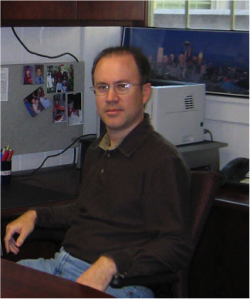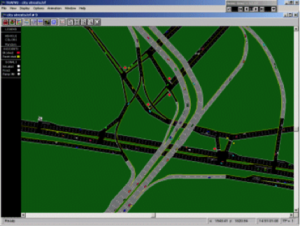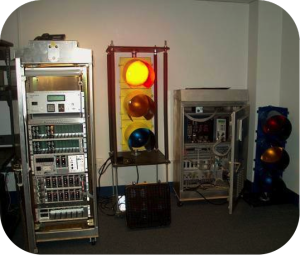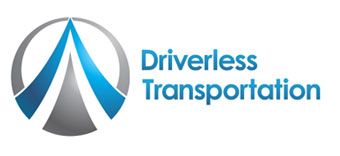We recently talked with Dr. Scott Washburn, Associate Professor in Transportation Engineering from the University of Florida Civil and Coastal Engineering Department. Dr. Washburn explained that in 2013 he and his colleagues formed a transportation institute, called the University of Florida Transportation Institute (UFTI), under the College of Engineering.

Dr. Scott Washburn, Associate Professor in Transportation Engineering from the University of Florida Civil and Coastal Engineering Department
The intent of the UFTI is to bring together faculty and staff from multiple departments across campus (such as computer science, mechanical engineering, urban and regional planning, and even occupational therapy) with expertise and interest in transportation issues. The UFTI not only focuses on research, but also specializes in education and technology transfer. As defined on their website, the UFTI aims to advance the transportation state-of-the-art, disseminate research results, and provide educational opportunities related to transportation across the lifespan. Florida has recently passed legislation allowing the testing of autonomous vehicles on its roads (under very specific conditions) and as a result the Florida Department of Transportation (FDOT) is aggressively pursuing a research agenda to facilitate the move toward a completely autonomous highway system. The UFTI has been part of the initial discussions with the FDOT for shaping this research agenda, and they anticipate being a key partner to the FDOT in carrying out this research agenda. However, research in the area of autonomous vehicles is hardly new to UFTI, as affiliated researchers in the mechanical engineering department built autonomous vehicles to compete in the DARPA Grand and Urban Challenges.
Currently, Dr. Washburn spends his time teaching one or two classes per semester, advising students, and conducting research. Dr. Washburn’s research focus areas include Traffic Operations, Level of Service, and Statistical and Computational Methods. In support of his research, Dr. Washburn makes extensive use of simulation, especially custom simulation programs that he develops. An area he has recently been focusing on is using simulation to study the impacts of driverless transportation on traffic operations.

What became of particular interest as we spoke was Dr. Washburn’s distinction between two words that are often used interchangeably in this industry: autonomous and automated.
Autonomous, he explained, is the type of work that Google is focusing on. An autonomous vehicle is one that is completely independent, not subject to any outside control. In the automated highway system, autonomous vehicles do not need any additional input from the infrastructure beyond what is currently in place. He explained that less reliance on additional infrastructure is appealing, as it leads to fewer complexities, fewer costs, and fewer possibilities for someone to hack into. He explained that as far as Google is concerned, with this approach you may not get as optimal traffic flow conditions, but by reducing investment costs and reducing overall complexities, you get a system in which fewer things could go wrong.
What he explained about automated vehicles, however, is that they involve some level of coordination between the vehicles and the roadway infrastructure (sometimes referred to as connected vehicles). In this system, the vehicle is not entirely independent. This could mean vehicle-to-vehicle (V2V) and/or roadside communications. The U.S. Department of Transportation defines vehicle-to-infrastructure (V2I) communication as the wireless exchange of critical safety and operational data between vehicles and highway infrastructure, intended primarily to avoid or mitigate motor vehicle crashes but also to enable a wide range of other safety, mobility and environmental benefits. Automated vehicles generate information from other nearby vehicles and traffic control devices, which are deployed by the DOT. This system provides vehicles with a rich set of information and data, thus leading to a safer and more efficient driving environment.
Although Dr. Washburn was hesitant to make predictions on when we will see implementations of automated/autonomous vehicles, as he feels the odds of predicting this correctly are about as good as predicting the “Final Four” correctly, he predicted that we would see a partial implementation of automated vehicles on our roads around the year 2035. He did indicate that policy issues were likely to affect the implementation timeline more than the technology issues.
If you’re interested in learning more about the work that the UFTI does, be sure to check out the UFTI webpage http://www.transportation.institute.ufl.edu/ 



